The Grove Street Cemetery in New Haven is an historic icon among Connecticut burial grounds. It is steeped in history, has been identified as a National Historic Landmark and identified as an Arboretum. Along with this fascinating cemetery, we’d like to highlight that it is now overseen by the grandfather-grandson team of A. Seeley Jennings and Jacob Jennings. Seeley is the Grove Street Cemetery superintendent and has been a longtime cemeterian. Jacob is the assistant superintendent and is a director on the CCA board.
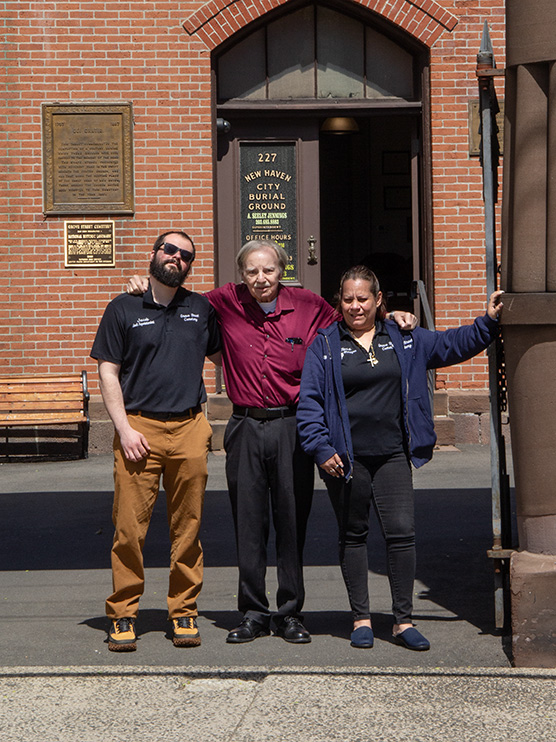
Seeley oversaw cemetery operations at Lakeview Cemetery in Bridgeport for almost 34 years, after which he retired at the age of 70 because of the cemetery board’s retirement requirements. He was retired for four months when he received a call from the president of the Grove Street Cemetery standing committee asking if he would do consulting work for Grove Street. As a result of saying yes, Seeley ended up working full-time as superintendent at Grove Street starting in October of 2016. After almost eight years as the cemetery’s superintendent, he reports that he’s so happy that he took on the new job, recognizing Grove Street as possibly the most beautiful and historical cemetery in all of Connecticut.
Grandson Jacob learned the business working for Seeley at Lakeview every summer since he was 16 years old. Once Seeley started at Grove Street, he hired Jacob who subsequently rose to his current position of assistant superintendent with the intention of eventually ascending to the role of superintendent upon Seeley’s second retirement! Office Manager Rosa Rodriquez rounds out the Grove Street Cemetery team.
As for the history of Grove Street Cemetery, a little context is in order. The New Haven Colony was established in 1638 when Puritan Minister John Davenport and his partner Theophilus Eaton left the Massachusetts Bay Colony and sailed into New Haven Harbor. It’s said that they, along with their followers, left Massachusetts to start a more-strict group of Puritans and because the Massachusetts Bay Colony was becoming overcrowded.
The New Haven Colony was established around what is now the New Haven Green, one of the oldest in New England, with the surrounding lots being laid out in an organized grid. Today, the Green is home to the Center Church, the United Church and Trinity Church. The Green was also the site of the earliest graveyard in New Haven. Burials occurred on the Green from 1639 through 1812, the time of the last burial. The total number of burials is said number close to 5,000. A reminder of the existence of the graveyard on the Green occurred during Superstorm Sandy when winds toppled an historic oak tree, exposing in its roots skeletal remains from long ago!

In 1794 and 1795 a surge in deaths related to a Yellow Fever epidemic overwhelmed New Haven and the almost-full burial yard on the Green. As a result, in 1796 a group of New Haven citizens led by U.S. Senator James Hillhouse planned a new cemetery a block north of the Green at the “edge of town” on what is now Grove Street. It was called “The New Burying Ground”. The first burial took place in late 1797 and, today, the cemetery accommodates approximately 100 burials annually. Those burials occur throughout the cemetery where unused plots of long-gone families have been recaptured by the cemetery for sale to those in need today.
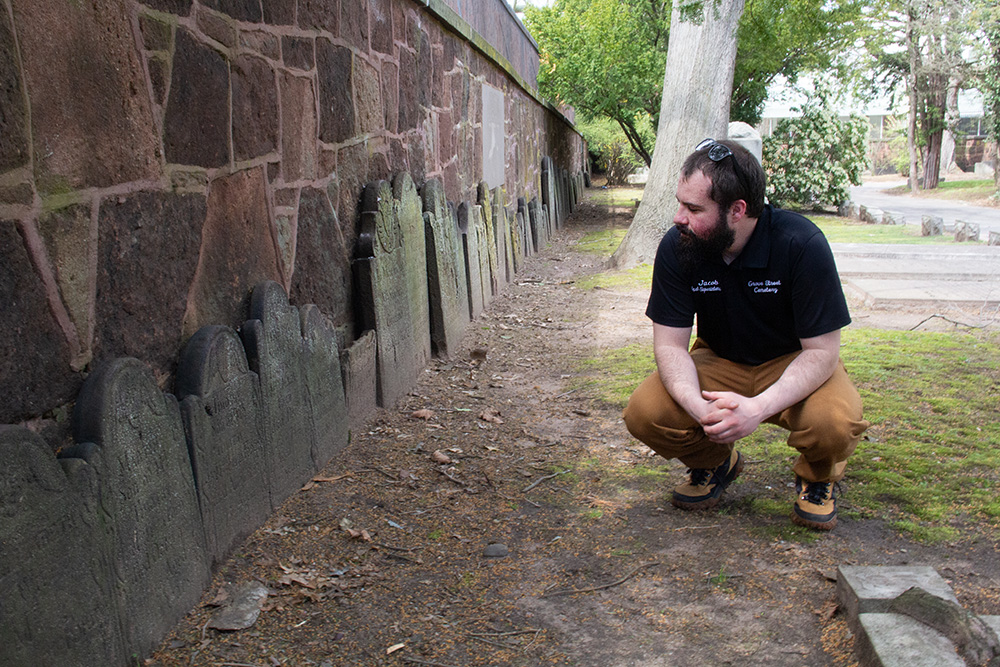
Grove Street Cemetery is notable for many reasons. It is said that it is the oldest chartered private cemetery in the United States and was laid out with named streets and included family lots, unique up to this point in time. Following the last burial on the New Haven Green in 1812, many of the tombstones that had been placed on the Green were moved to Grove Street Cemetery and lined up in alphabetical order around the cemetery’s periphery, tombstones that can be seen today (photo at left). The thousands of early residents interred on the Green, however, were left in place (a handful of original burials with their tombstones are protected in what is known as “The Crypt” located under Center Church on the Green). Not many who walk the beautiful Green are aware that they are walking among thousands of now-unmarked graves!
Today, Grove Street Cemetery and its beautiful grounds are an oasis in downtown New Haven. Many visitors walk the grounds to take in the beauty and history of the cemetery. One can often find Yale students and New Haven businessmen and women taking a break in their busy schedules to take in some sun. During the pandemic, busloads of visitors came to walk the grounds of the cemetery. On a sunny spring day, the cemetery is full of visitors.

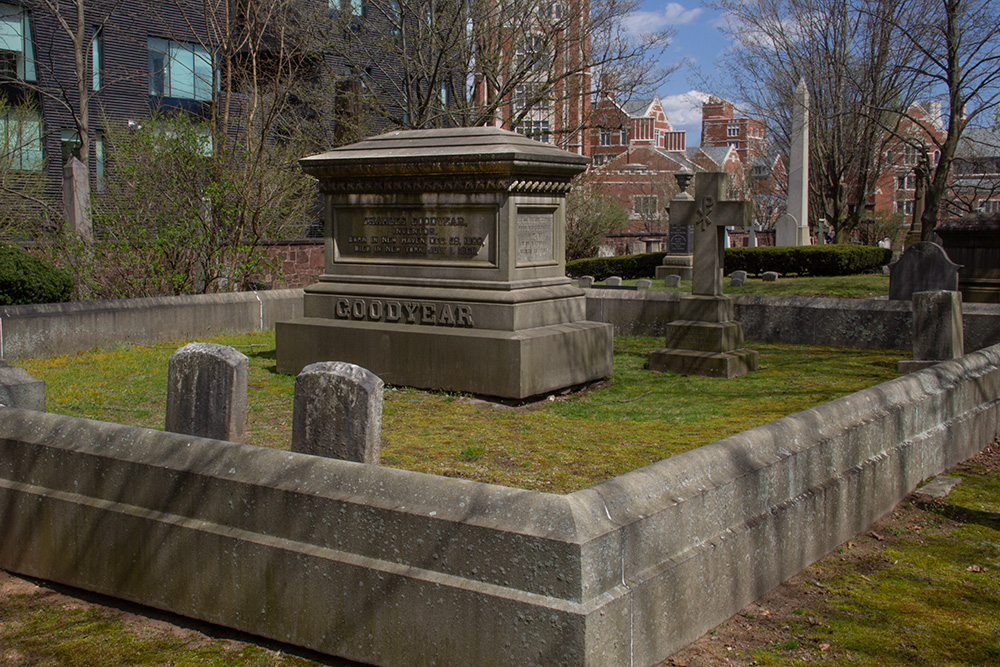


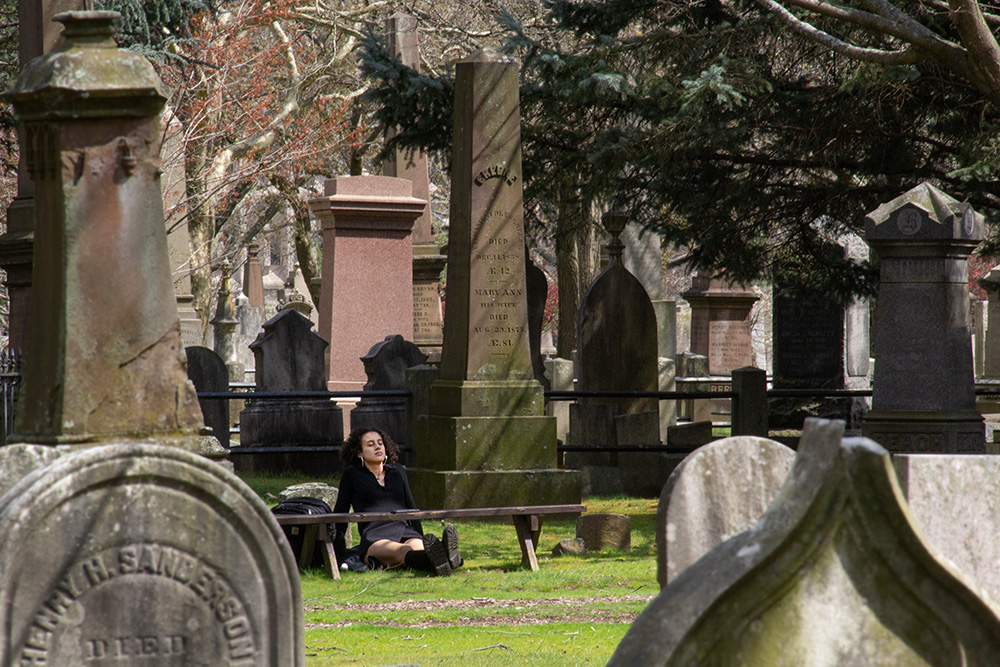
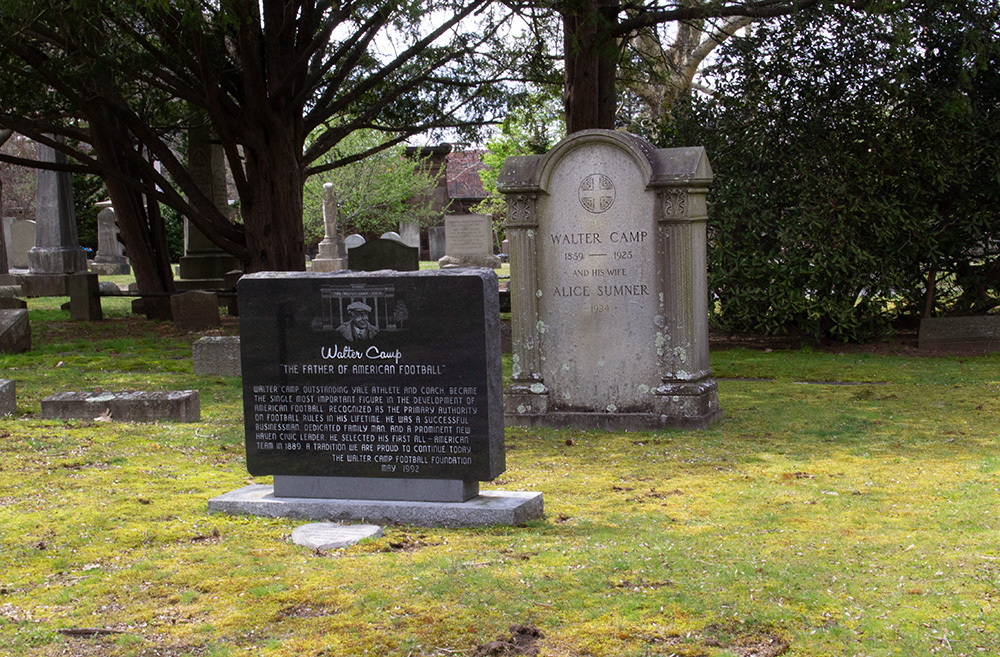
There are many notable burials in the cemetery, the list of which is too long to include here. Some of those notables include Roger Sherman (the only man to have signed all four great state papers of the United States: the Continental Association, the Declaration of Independence, the Articles of Confederation and the Constitution), Eli Whitney (the inventor of the cotton gin, a key invention of the Industrial Revolution), Noah Webster (called the “Father of American Scholarship and Education” and the author of his famous American Dictionary of the English Language, published in 1828), Charles Goodyear (a self-taught chemist and manufacturing engineer who developed vulcanized rubber) and Walter Camp (the father of modern American football). Many notable Yale past presidents and professors are buried here. The amazing list of those buried at Grove Street Cemetery can be found on the cemetery’s website.
The Jennings’ are anxious to have all who are interested visit Grove Street Cemetery on May 28, 2024 when noted tombstone restorationist Jonathan Appell will stop as a part of his 48-State Cemetery Tour. Appell’s tours and discussions are always interesting and not to be missed.
